Bowers & Wilkins – Company Profile and Signature 801 D4 Review
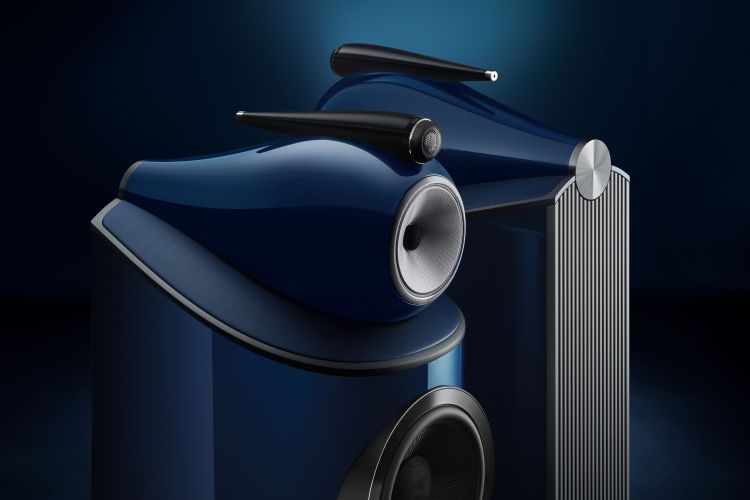
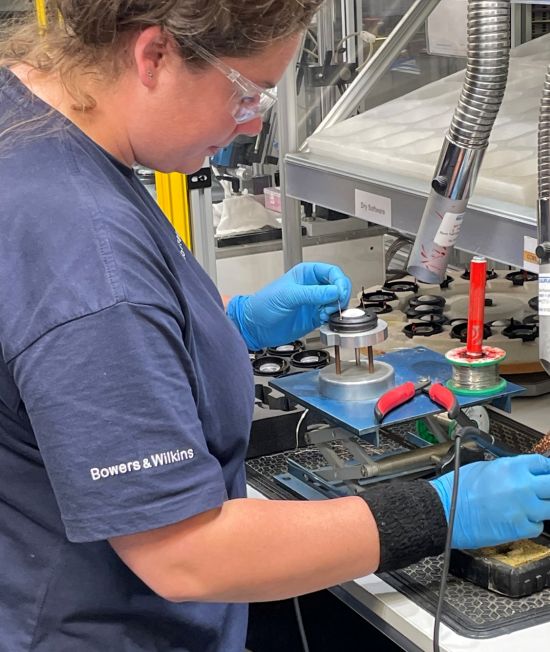
Diamond Tweeter production.
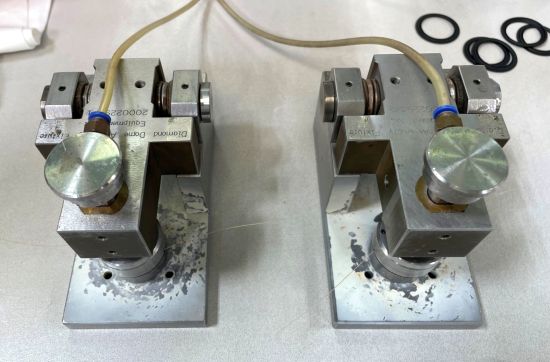
The precise production technique was not unveiled but it involves high precision and a lot of pressure.
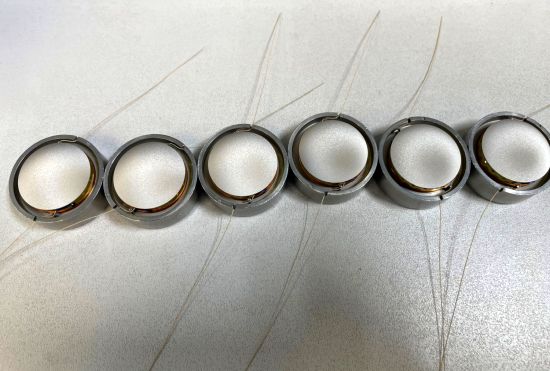
Above is a row of tweeters, ready for use. Ronald mentioned that the tweeter surfaces are not this nice after the initial production steps. What we see as the nice clean “diamond-like” surface is actually an extra applied layer. Without this layer, the tweeters would look gray and dull.
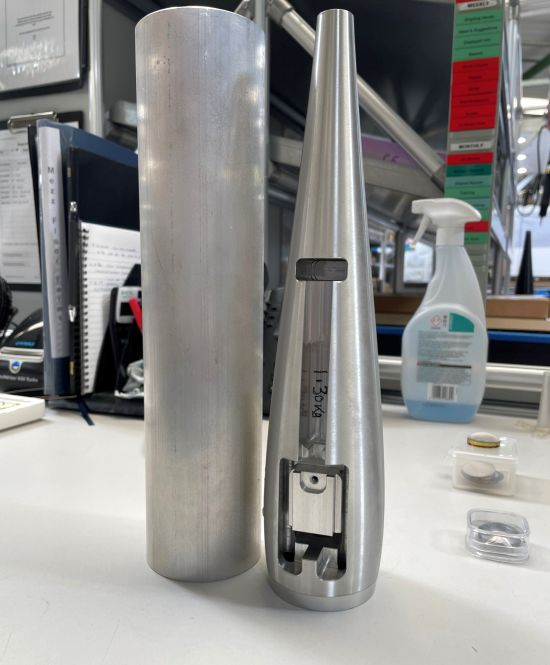
Tweeter enclosure milled from a solid piece of aluminum.
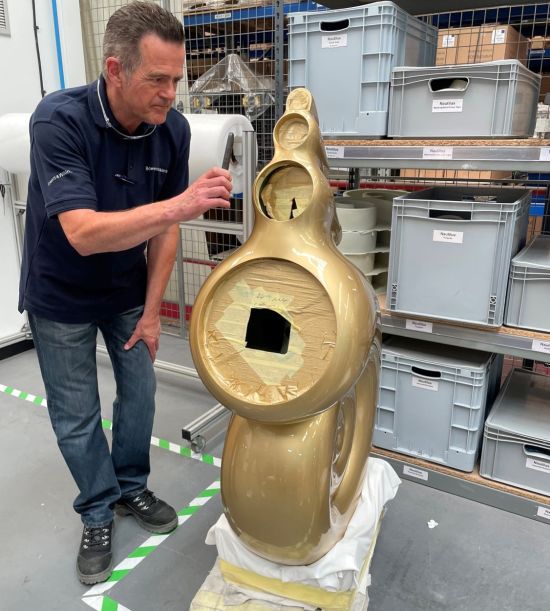
Production of a gorgeous gold Nautilus.
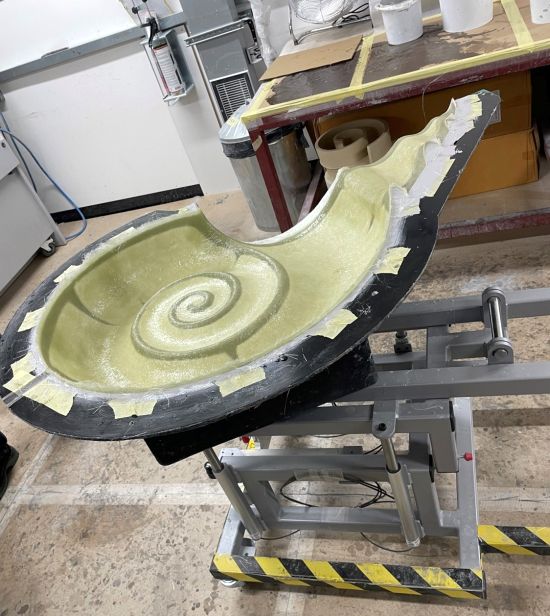
While on the subject, this is one of the casting shells for the fabrication of the Nautilus shape.
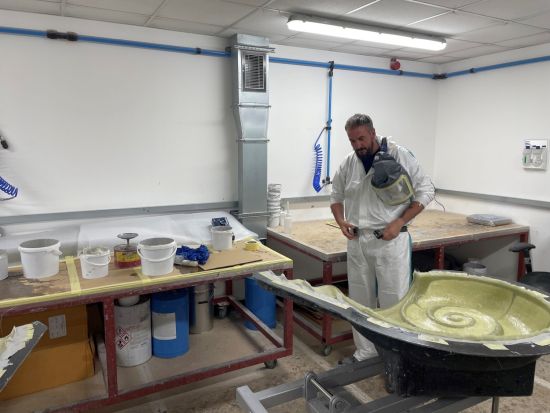
This is one of the two only experts tasked exclusively with the continuous making of the iconic Nautilus loudspeaker. The model has been available since 1993 and the two guys work around the clock to deliver all Nautili that are ordered. If you want one, please prepare to spend some time waiting for it to be finished.
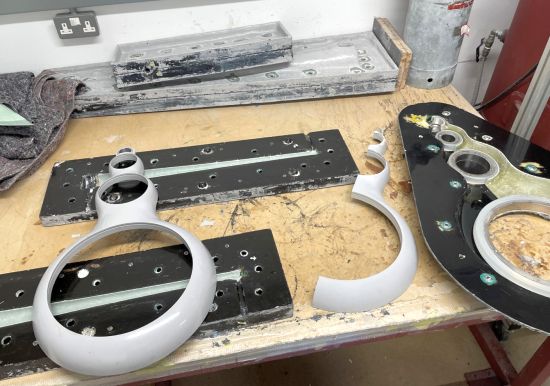
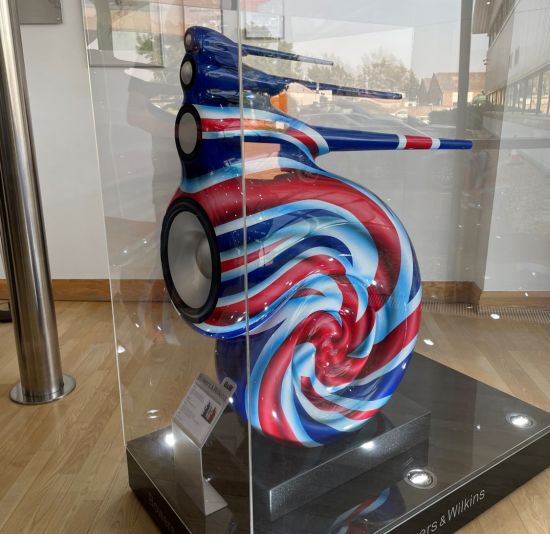
Here’s a particularly “lickable” Nautilus sample, not inspired by a lollypop but comprised of the English flag!
The Heritage of Signature
Bowers & Wilkins use the Signature name sparingly, reserving it only for the most exclusive, significantly upgraded versions of its mainstream loudspeakers and technologies. That is why, since the brand was founded in 1966, only seven loudspeaker series have been allowed to carry the prestigious Signature designation.
Every Signature model has had its own unique identity and at the same time, every model has been connected to its predecessor by several common threads: no-holds-barred performance, unique, distinctive beauty, and special-edition exclusivity.
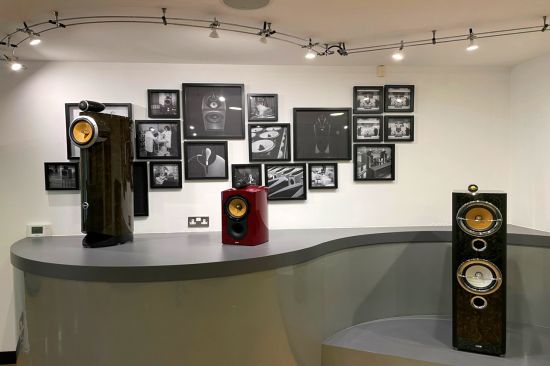
Launched in 1991, it all began with the original Silver Signature (shown below) marking two momentous occasions in the history of Bowers & Wilkins. First, it celebrated the 25th anniversary of the 1966 foundation of the company. Second, it was released as a posthumous tribute to the founder, John Bowers, who passed away in 1987.
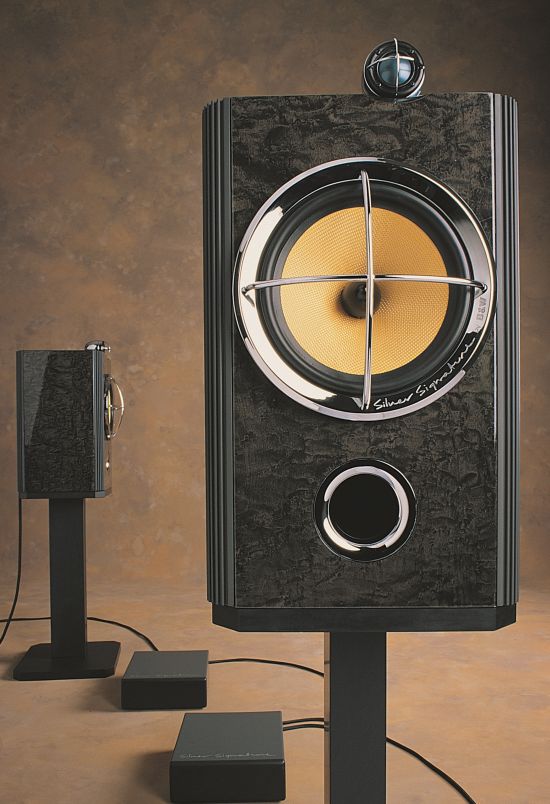
The Silver Signature was a fully optimized and no-expense-spared loudspeaker based on established Bowers & Wilkins thinking. This speaker concept did not introduce new technologies but instead, it made the very most of existing components and processes. A great deal of attention was paid to crossover design, signal pathway, and cabinet finish. Retail price was not the key deciding factor. Upon its release, the Silver Signature (shown above) was similar in size to Matrix 805. However, its extreme, performance-orientated design meant it cost over four times more than an equivalent pair of Matrix 805s! Silver Signature was now established as the ultimate purist choice. It was a showcase, not of where the brand was headed in the future, but of how much knowledge it had amassed thus far.
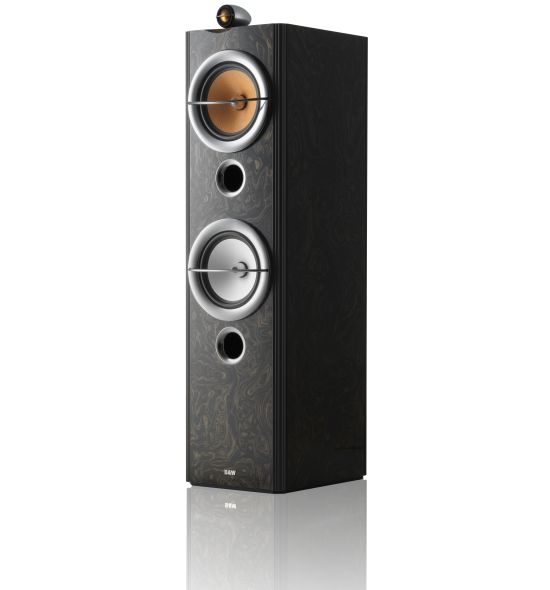
Above: Signature 30
Speaking of “Silver”, in fact, every major metal component in the Silver Signature apart from its aluminum tweeter dome was actual silver. This includes the large metal protectors over the midrange drive unit and the tweeter, and the terminals. And inside, the speaker also featured a lot of the precious material. It used silver windings on the voice coil, silver foils and windings inside the capacitors, silver cabling to feed its drive units, and still more silver cabling to connect to its crossovers, which were housed in external components for superior isolation from the cabinet.
Of course, this level of attention to detail had a price, and it was a hefty one: back in 1991, a pair of Silver Signatures cost more than four times as much as those 805 Matrix models that were superficially very similar. But for the few passionate enthusiasts who bought them, it didn’t matter a jot.
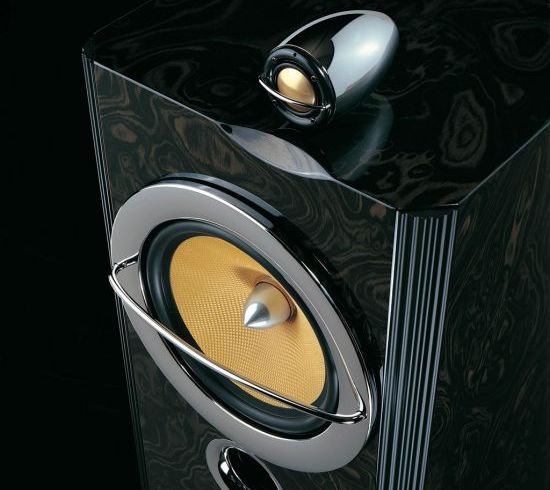
The Signature 30 (above and below) was an elegant floor-standing version of the Silver Signature’s configuration that arrived five years after its sibling to celebrate the company’s 30th Anniversary.
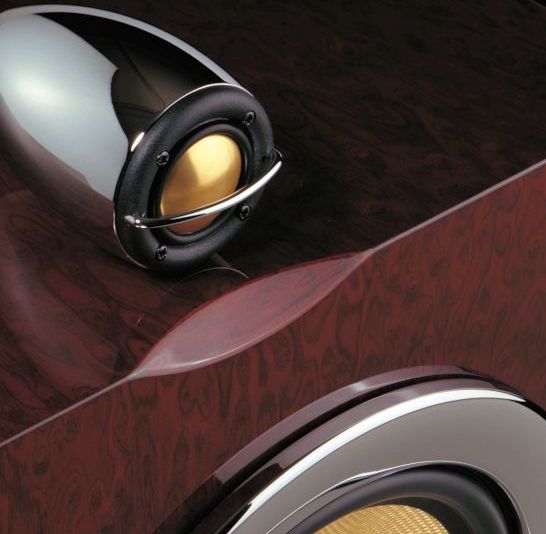
In 2001, the company introduced two Signature 800 Series models: Signature 805 and Signature 800.
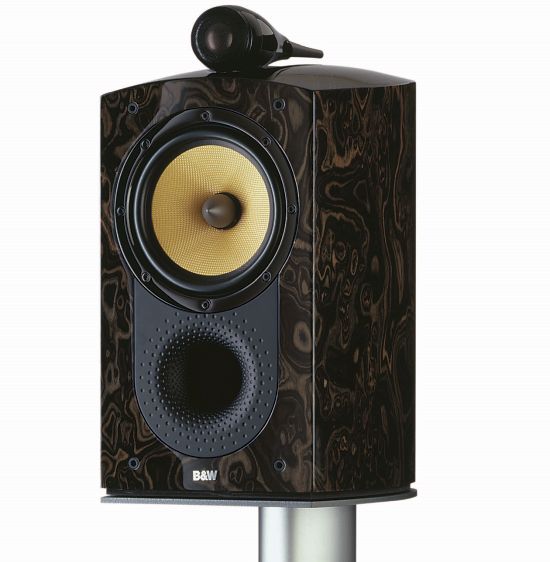
Above: Signature 805; Below: Signature 801
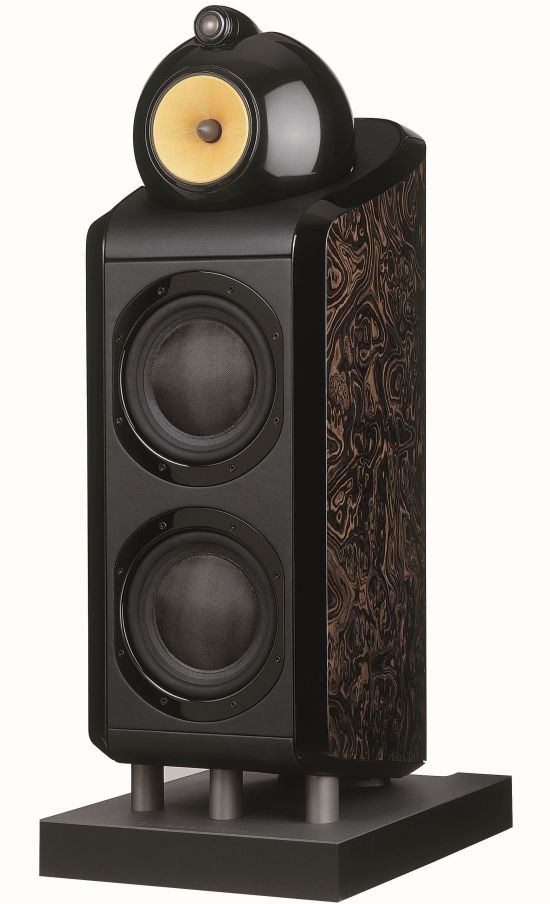
Each of these two models featured the same recipe of greatly upgraded internal components plus bespoke cabinet finishes and, in the case of these two models, Connolly leather trim.
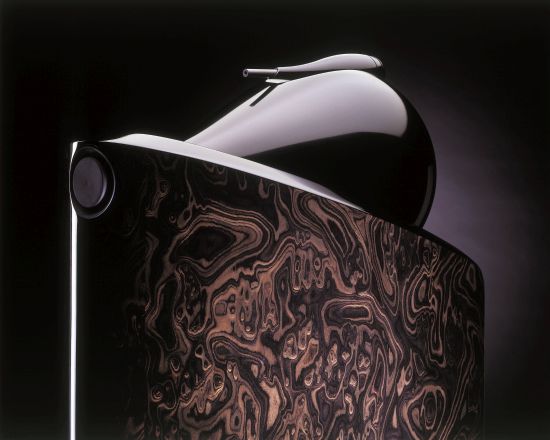
In 2006, the company marked its 40th Anniversary with a rather unique and special model, the Signature Diamond (shown below).
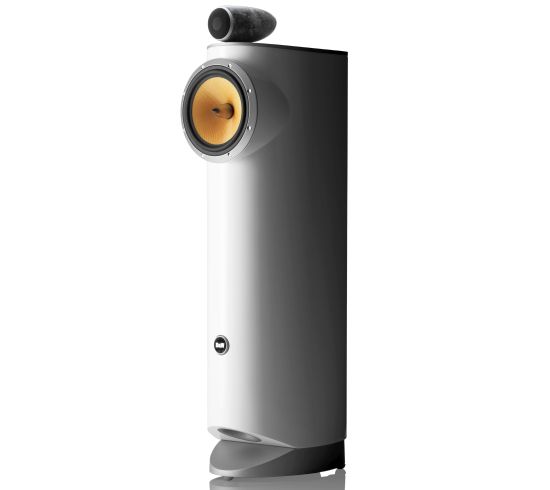
Designed by Sir Kenneth Grange (the man behind the DM6, 801, and Matrix 800), the Signature Diamond was an elegant, compact two-way floorstander with a radically curved cabinet plus a unique, all-marble Tweeter-on-Top housing featuring a diamond dome diaphragm.
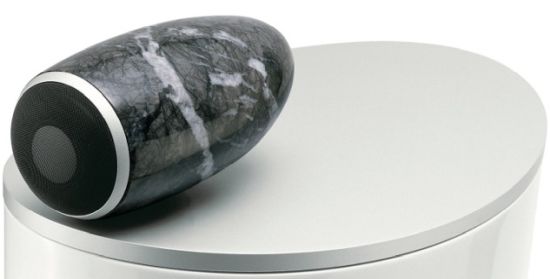
And this brings us right up to date with two new 2023 models, the 801 D4 Signature and the 805 D4 Signature. These 800 Series Signature models build on the pioneering foundations of the company’s most advanced range of loudspeakers.
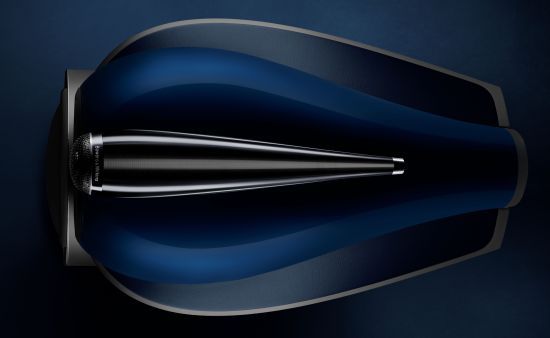
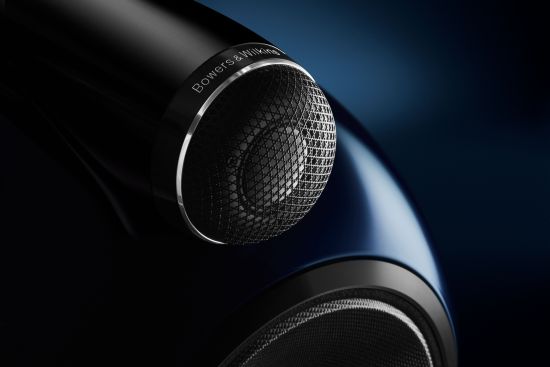
801 D4 Signature and 805 D4 Signature
To clearly illustrate their prestigious position within the Bowers & Wilkins portfolio, both the 801 D4 Signature and 805 D4 Signature are available in two exclusive new finishes: Midnight Blue Metallic paint and California Burl Gloss wood veneer.
The Midnight Blue Metallic paint is the same as that used on the iconic Nautilus speaker, with a total of eleven coats of paint and varnish that are machine polished. Not counting the curing time, just applying the paint takes more than 18 hours. The Midnight Blue Metallic speakers also have a specially developed blue leather by Connolly finish on the top plate.
Alternatively, both models are also available with a special California Burl Gloss wood veneer finish, featuring a unique grain pattern and a luxurious high gloss finish, in combination with black leather by Connolly. The wood veneer is sustainably produced technical wood from the Italian specialist ALPI. With no less than fourteen coats of paint and multiple sanding and polishing operations, the total finishing time for one 801 D4 Signature in California Burl Gloss is more than 24 hours.
The flagship model is the 801 Signature, a three-way floorstanding loudspeaker with identical cabinet dimensions and drive unit sizes as the 801 D4.
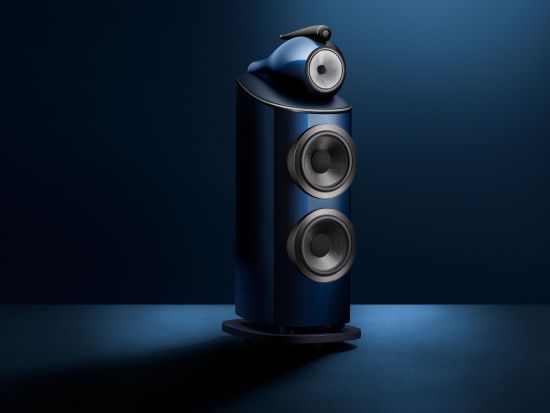
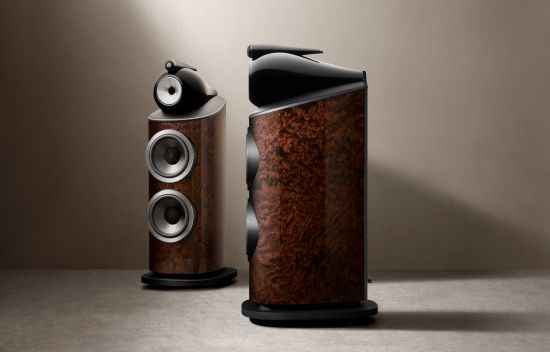
The smaller model in the new range is the 805 Signature, a two-way stand-mount loudspeaker with identical cabinet dimensions and drive unit sizes as the 805 D4. As with the standard 805 D4, the new model can be used with an optional floorstand, the FS-805 D4.
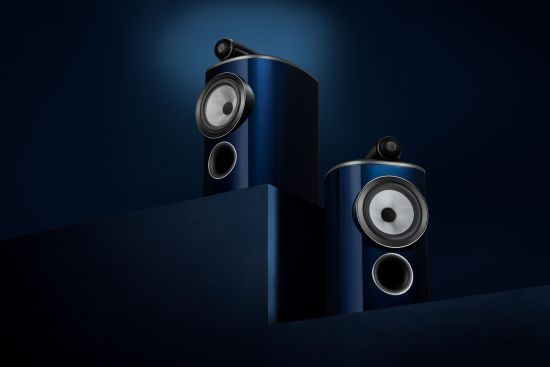
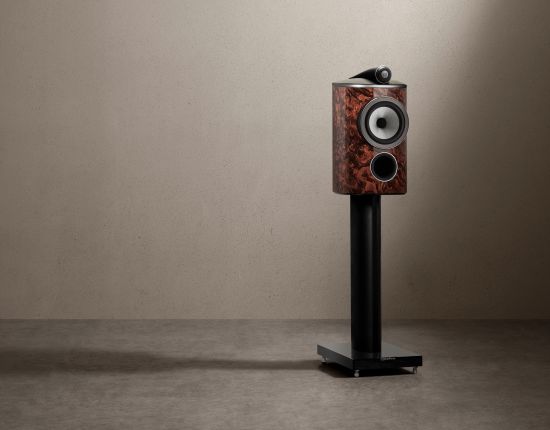
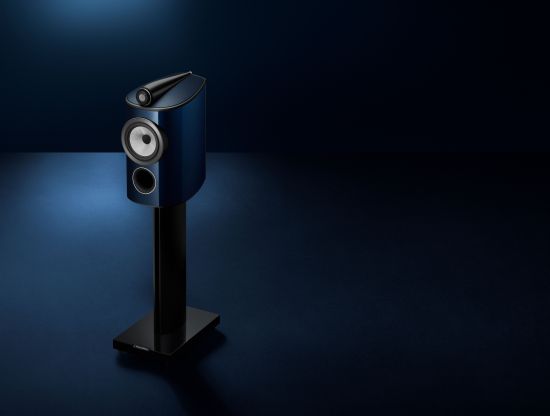
Please note that the 805 stand-mount speakers were not set up to be listened to. As such, the rest of this review will focus only on the 801 D4 Signature.
Next: 801 D4 Signature – Technical Aspects
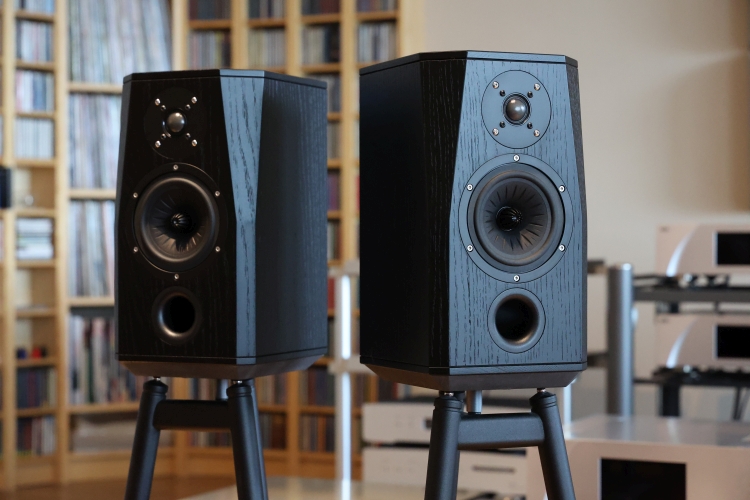
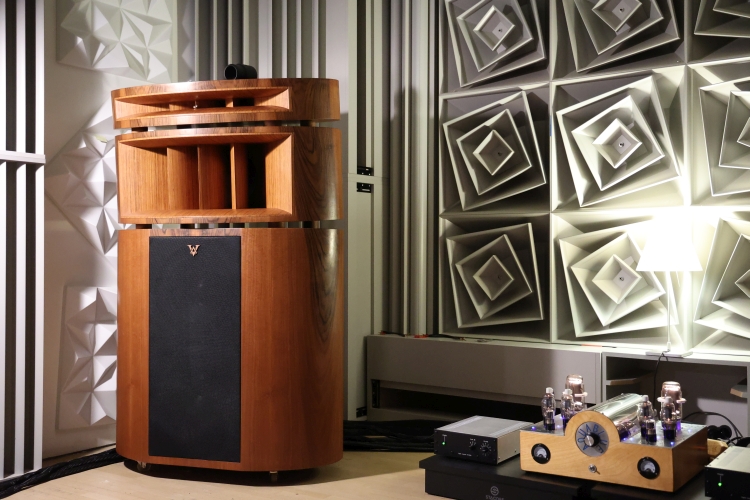
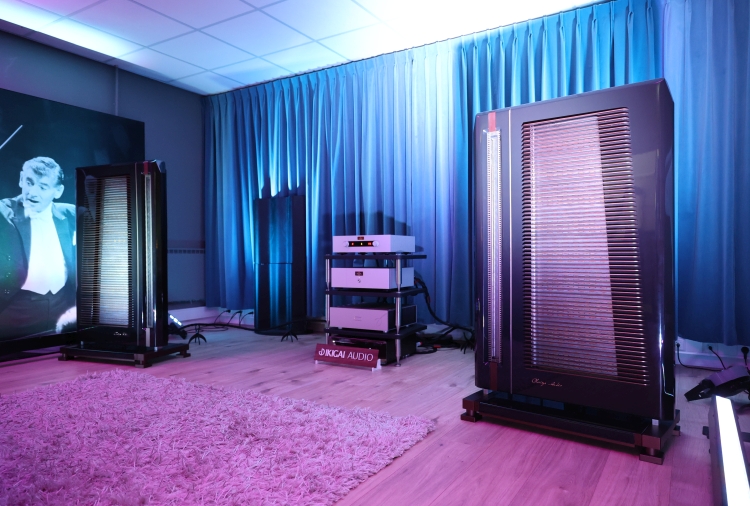
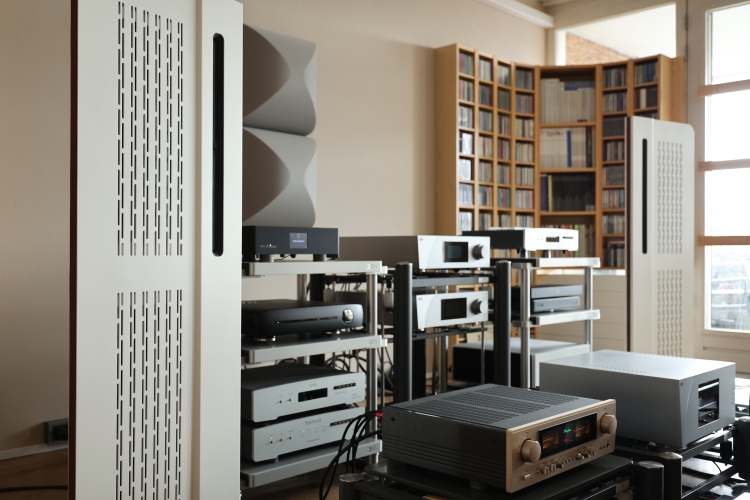

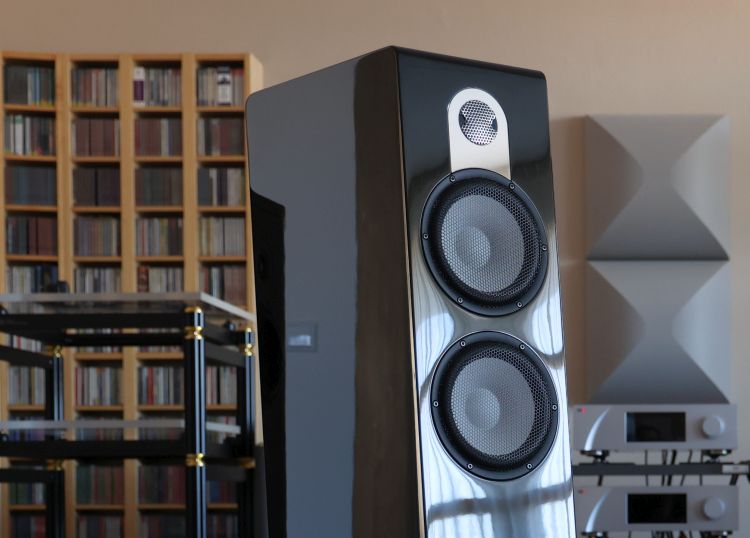
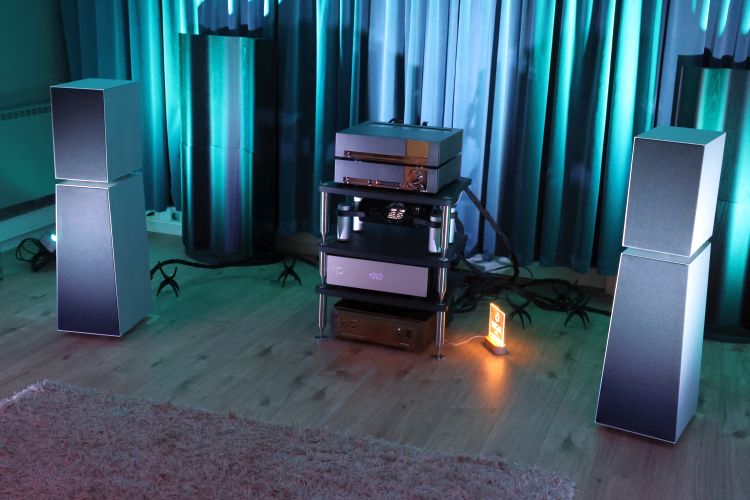
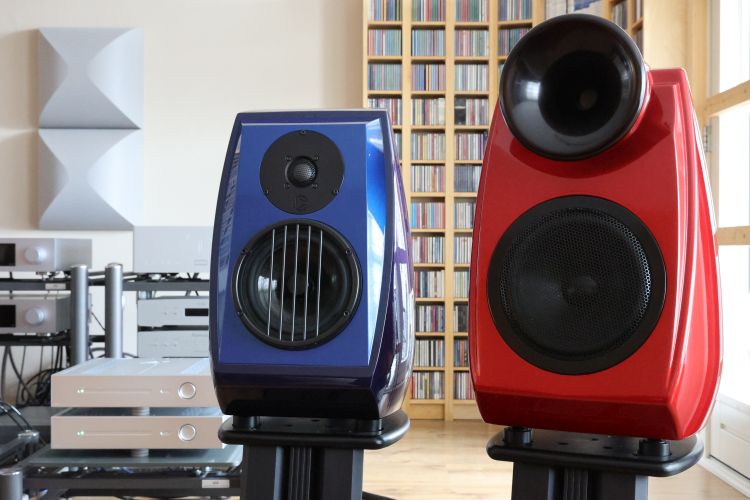
Nice article (and photos) to read!
I would expect a Signature set a bit later in the life cycle of the D4 series and also would find that more appropriate.
As an 801D4 owner, if I had the choice now, I would not choose the Signature. Simply because of the color. I don’t like the brown in itself. And I don’t like blue in my set, in which everything is black and grey/silver.
In my opinion, the Sound United set does not do justice to the quality of the speakers. I mainly refer to the server as Mac Mini (Antipodes anyone? ;)), but I would also pass the internal DAC in the Classé (or the Marantz) for a better stand alone DAC.
While I do agree with your assessment of getting the source and DAC on par with the speakers, for the purpose of the A/B listening impression it suffices.
Thank you for the well written review.
Would it be possible to share information on the listening room dimensions, the position of the speakers, the listening position and how much toe in was used.
This is always useful information for speaker reviews as it helps one understand the listening impressions. All of the detail on the music and associated hardware is to an extent lost without the room information.
Hi Ian, The room is custom-designed and fully treated but providing dimensions and positioning info would not be very helpful in my opinion as no two rooms sound alike. Please note that the intention of this article is to introduce the Signature model and to illustrate the differences between the two models. It is not a full review, which I would normally do in my own listening environment. That said, some more info can be found in my previous 801 D4 review.
Hey Christian,
Really well done a thorough history of the B&W Signature history and nice info on the factory and building process. And a very succinct review-ette on the D4 vs the Signature. I heard the D4s at Capitol Audiofest last year or perhaps the year prior, the world premiere I believe. These were also brand new and not broken in and shoe horned into a smallish hotel room not a proper showing and so I won’t pass any judgement.
One question I was totally fascinated and glad they are still producing the Nautilus speaker what an icon! Do you know if they’ve continued to refine the design over the years or is it unchanged?
Again thanks for a really fun article!
Cheers,
Jon
Hi Jon, thanks for the nice feedback, glad you enjoyed the article. You know, I actually had the same question about the original Nautilus and the answer was that the design has remained unchanged. A major reason for this is “why change a winning team”, especially given that everything is sold out half a year or more in advance of production… I guess they made a very good point with that:-)
I just acquired a new 801D4 for my new house, and would like to know the brand of the that the 801D4 in your pics are on. I was planning to order a rectangular stone plate, but this one looks nice!
Hi Joe, Not sure what you are asking about. The brand of… what item? The baseplate or footers, perhaps? The speakers are shown in their standard guise, using the standard castors and spikes that come with the speakers.